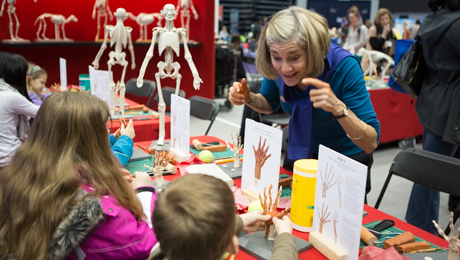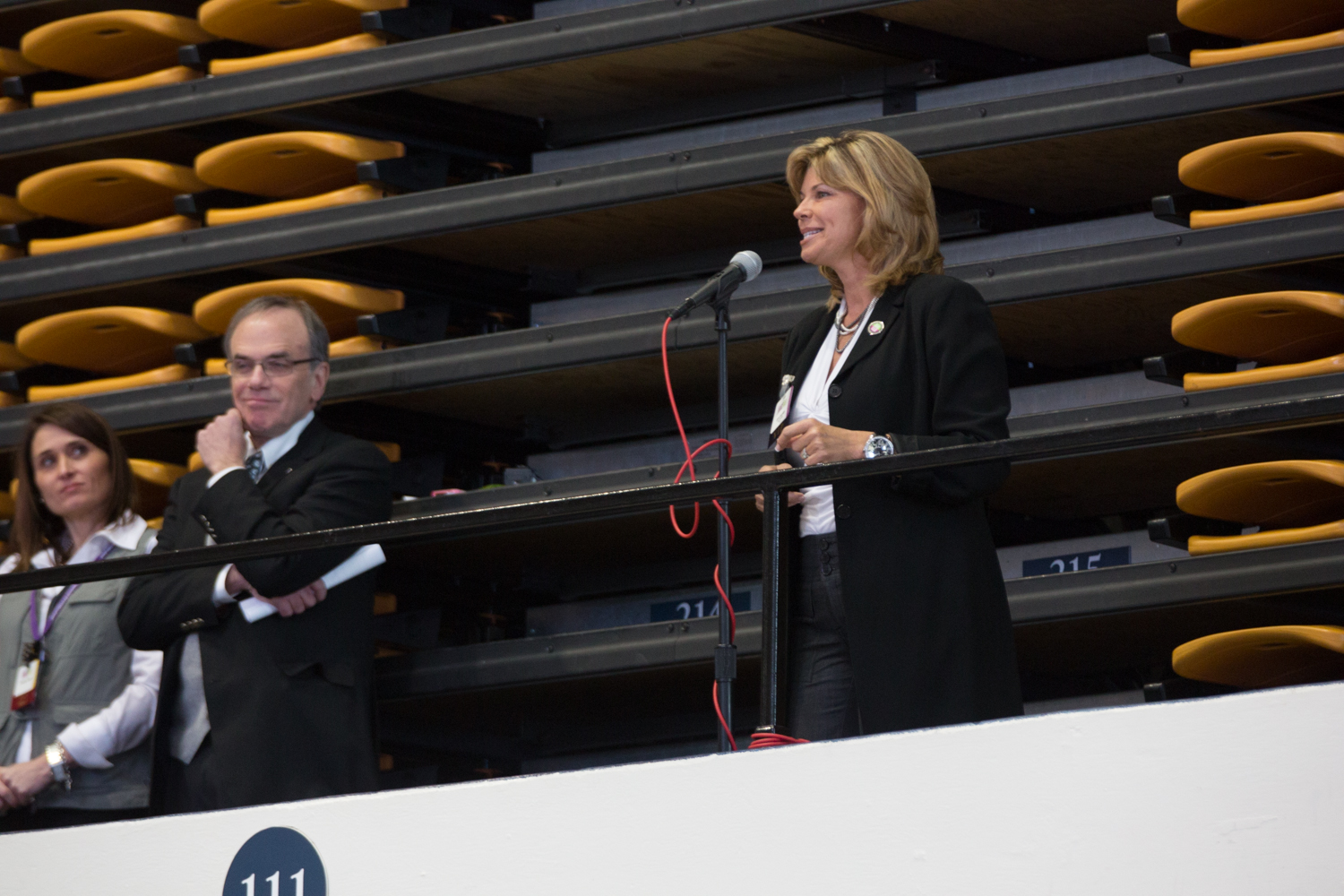From building skeletal structures of human hands with Anatomy in Clay Learning System to exploring engineering with FIRST Robotics, Share Fair, a celebration of cutting-edge teaching and learning tools, sparked the imagination of more than 3,500 PK-12 students, parents and educators on Saturday.
The interactive symposium was hosted by the George Washington University Graduate School of Education and Human Development and sponsored by the Morgridge Family Foundation in partnership with the Smithsonian Science and Education Center. It featured the “STEMosphere,” a collection of hands-on exhibits in the university’s Charles E. Smith Center, and "classroom intensives," professionally-led sessions for educators held in Duquès and Funger Halls.
“We as a university are strongly dedicated to STEM education,” University President Steven Knapp said. “To the teachers here today, we are very proud and honored that you have come to our campus to look at innovative ways to inspire the next generation of leaders in technology.”
John and Carrie Morgridge of the Morgridge Family Foundation founded Share Fair in 2009 with the goal of connecting educators with innovative teaching tools.
It has traditionally been held at the Morgridge College of Education at the University of Denver. The inaugural D.C. event is the second Share Fair to be held outside of Denver.
“We are here to support and honor our teachers today,” Ms. Morgridge said. “Share Fair lets teachers learn side by side about how engagement elevates both teachers and students.”
STEM took center stage with 35 interactive “educational play” exhibits, including a display more than 18 feet tall and building stations by KEVA Planks, a simple building blocks system that lets students play architect; a 3D printer from the Smithsonian that created a small-scale mask of Abraham Lincoln on–site; and alka seltzer powered rockets from Einstein in a Box.
The university’s commitment to STEM education as a focus of the 10-year strategic plan was also at the core of the event. The Office of Sustainability’s “Bag Monster” roamed the floor. The creation, made from 500 plastic bags, emphasizes the importance of waste reduction and recycling.
The School of Nursing exhibited simulation mannequins used in the nursing program for the last 10 years that can exhibit symptoms similar to humans, including bruising, internal bleeding and giving birth.
Representatives from the Department of Anthropology compared the human brain to those of other animals using 3D models, and Assistant Professor of Computer Science Gabe Sibley displayed the autonomous car developed by the School of Engineering and Applied Science Robotics Program.
“We have an abiding belief that demography is not destiny but education is,” GSEHD Dean Michael Feuer said. “What we are aspiring to do on this campus is to create opportunities for young people to become participating, productive, and happy and healthy citizens of this great democracy.”
As students and families explored the latest interactive classroom tools, educators attended professional development sessions that taught ways to integrate these tools into the classroom.
Highlights included a lesson taught by Shawn Sweeney, a national program coordinator for the Jane Goodall Institute, about Roots and Shoots, an environmental humanitarian youth program that encourages students to map their communities; an introduction to ClassFlow, a cloud-based tool that assists teachers in using digital resources to connect with students; and a lesson in how honeybees think taught by Assistant Professor of Biology Hartmut G. Doebel, the head of GW’s beekeeping and research team.
Following the sessions, educators gathered in the lobby of Duquès Hall for a chance to win iPads and other prizes through a give-away hosted by the Morgridge Family Foundation and the classroom intensive presenters.
“I encourage you to think about how you can shift gears and use these tools to change your classroom,” Ms. Morgridge said.













